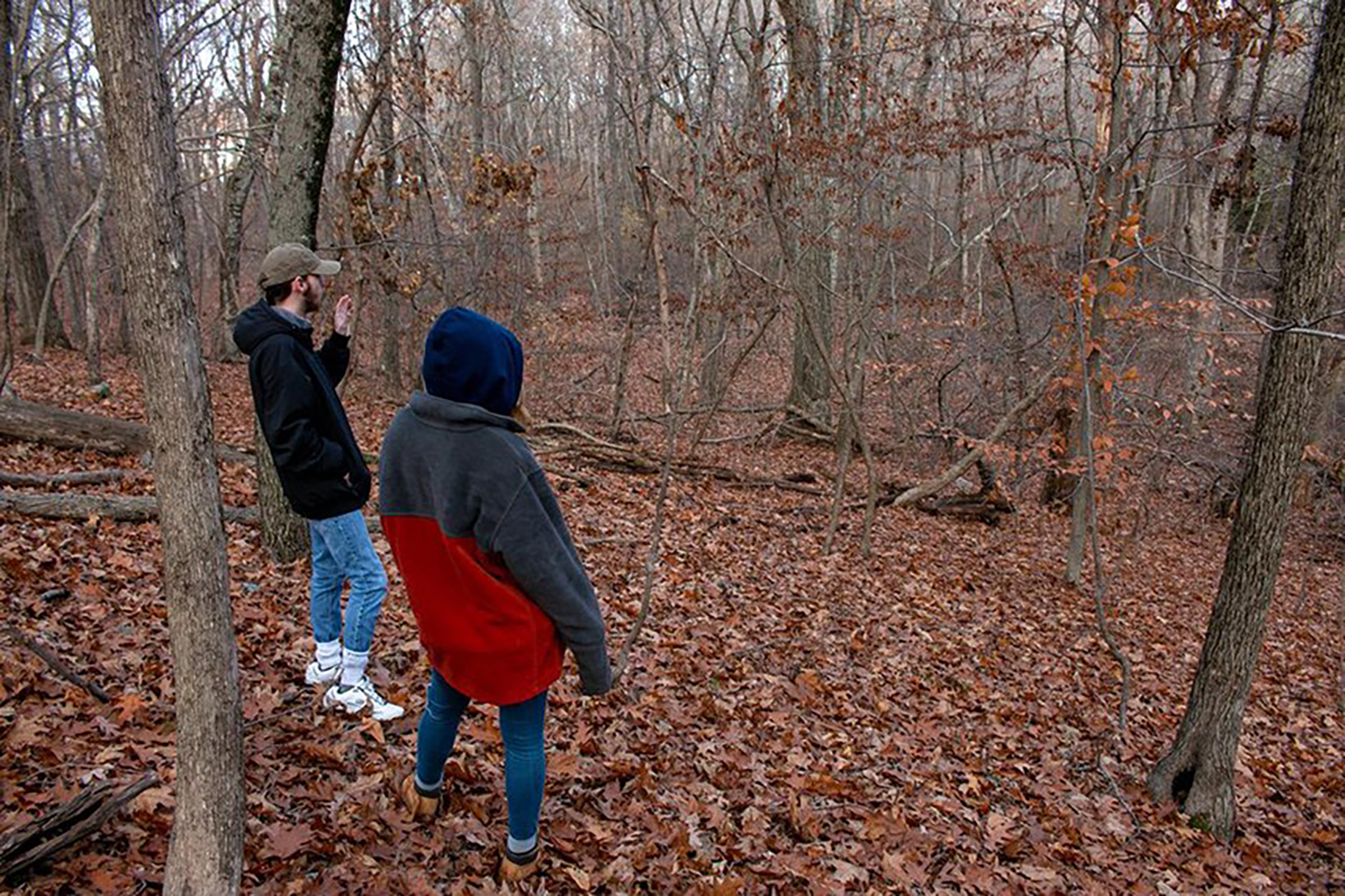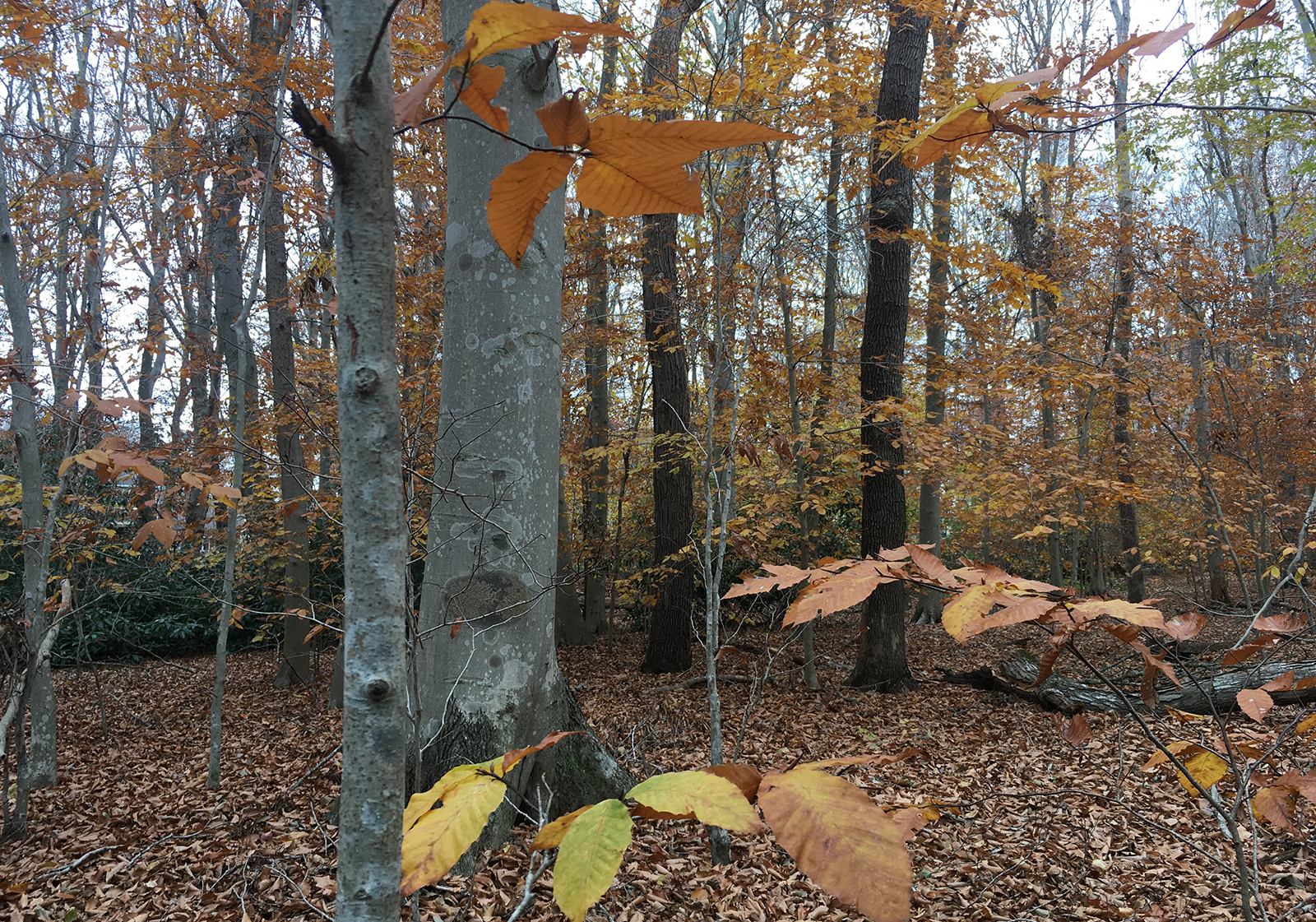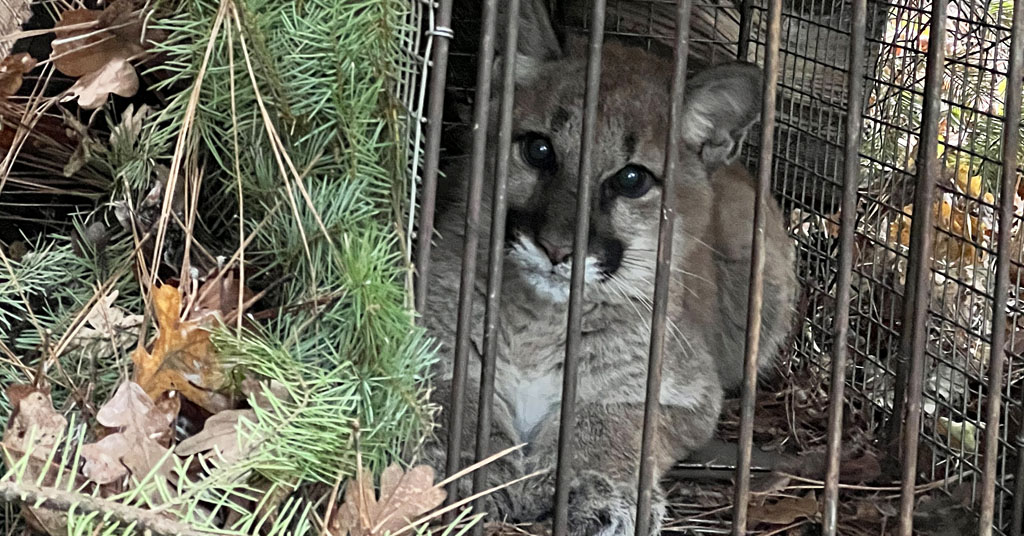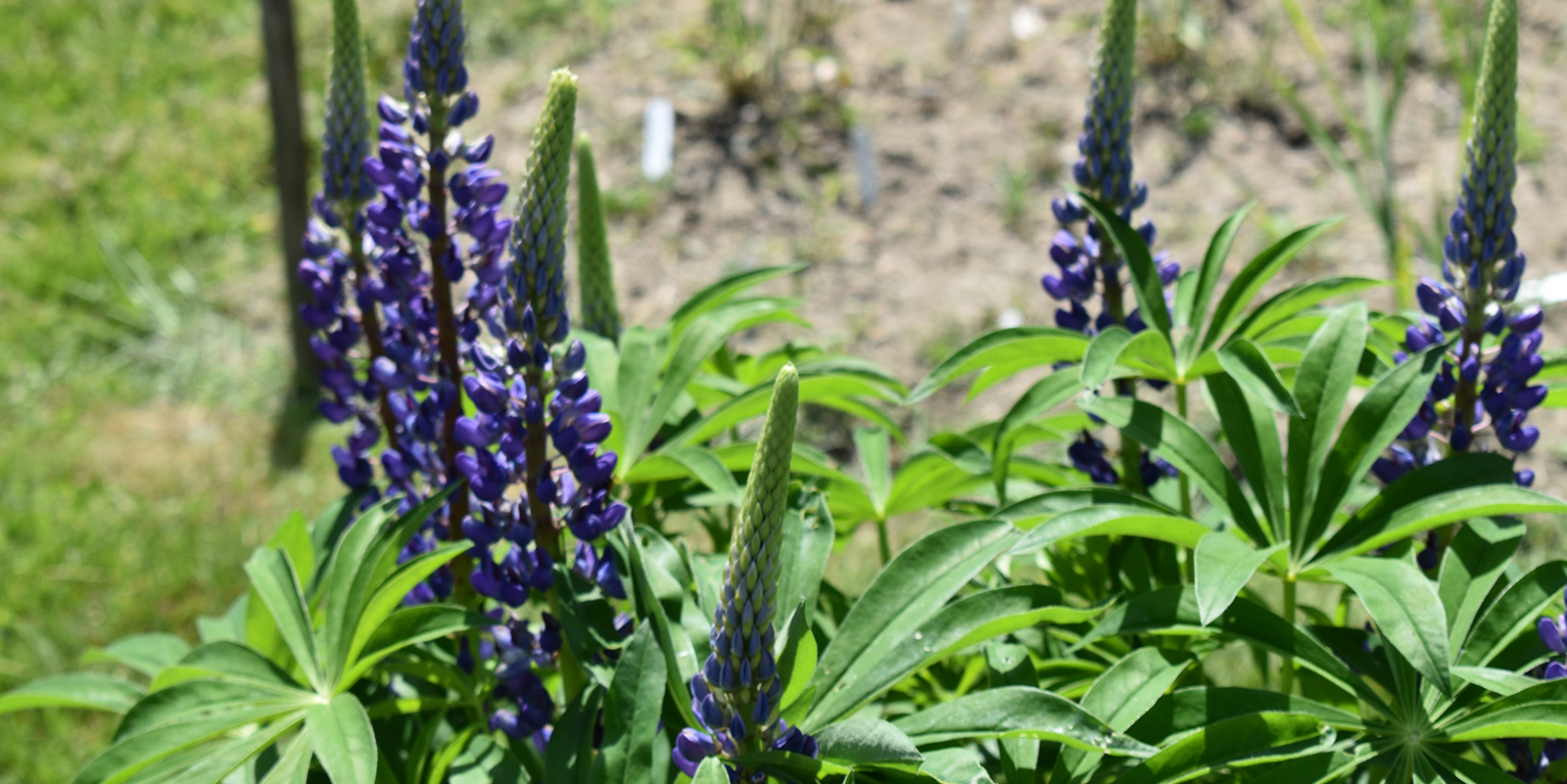Tree Huggers Work to Find and Map Pockets of Rhode Island’s Hidden Old-Growth Woodlands
December 2, 2021
WARWICK, R.I. — The pocket of forest between the golf course at Valley Country Club and the dispersed houses on Country View Drive doesn’t look like much, at least to the untrained eye.
But Nathan Cornell can see its value.
By his estimate, these trees have stood relatively untouched at least as far back as the Civil War, maybe beyond. He can tell by the balding bark and the presence of downed trees slowly degrading into the topsoil, by the lack of undergrowth and invasives paired with a well-established native understory comprised of hophornbeam and witch hazel.
“Canyon 2 Old-Growth Forest” is a patch of mature woodland smack in the middle of modern life, according to Cornell, the Rhode Island co-coordinator with the Old-Growth Forest Network. And so far, it has gotten lucky.
Since at least 1901, the forest has existed happily tucked in an unused corner of the Valley Country Club. But Cornell said a proposed plan to build a ground-mounted solar array on the property — currently on hold because of a citywide moratorium passed in November — could change the forest’s luck.
“The whole push for solar farms on forestland is … so counterproductive,” he said. “Trees do a lot more for us than solar panels ever can.”

Disappearing act
Patches of mature woodland in Rhode Island are rare. Centuries of forestry, agriculture, industrial growth, and urban development have effectively removed old-growth ecosystems from the state’s landscape.
According to the Old-Growth Forest Network, a Maryland-based nonprofit pushing to preserve a nationwide network of ancient forests, less than 5 percent of the Western United State’s original forests exist today. And in the East? A fraction of 1 percent of the region’s original forests remains standing.
The matured pockets that do remain are immensely undervalued and largely unprotected, according to Susan Masino, a professor of applied science and neuroscience at Trinity College who studies the ties between “healthy brains” and “healthy ecosystems.”
Small clusters of old-growth woodland, she said, have “always been our lifeline.” They come with a long lineup of benefits: reducing anxiety and depression; fostering childhood attachment to the natural environment; providing habitat for a diverse array of plant and animal species; cleaning the air we breathe and the water we drink; soaking up stormwater.
“We need these little stepping stones in our cities, in our suburbs to connect animals across the landscape, to connect us to the landscape,” she said during a South Kingstown Land Trust-sponsored talk last month.
Plus, according to Masino, mature forests are capable of storing carbon at 40 times the rate of younger, managed counterparts and are anticipated to be far more resilient to the impacts of the climate crisis.
Reforestation and afforestation — the practices of replacing forests on reforested areas and planting new forests, respectively — do aim to increase carbon storage and counter climate change. But these practices do little good, she said, if old growth is simultaneously felled. New forestland is difficult to acquire in the Northeast and newly planted trees will take decades to meet their carbon-storing potential.
The answer, according to Masino, lies with a relatively simple strategy: proforestation, the practice of growing out an existing forest to its full ecological potential. In 2019, Masino co-authored a paper on the benefits of the strategy in maximizing carbon storage and sequestration.
“Taken together, proforestation is a rapid and essential strategy for achieving climate and biodiversity goals and for serving the greatest good,” according to the paper.
By protecting mature and old-growth forestland, communities can effectively boost carbon storage while elevating environmental and public health and human well-being.
But there’s a “policy gap” in the protection of these spaces in New England, Masino said. Little distinction is made between old- and new-growth in state and federal management areas. Intact old-growth ecosystems see few legal protections. And in many cases, old-growth locations are unmapped and virtually unknown. According to Masino, this means that even if forestland is protected, old-growth “lifelines” can disappear without a trace.
“We need a strategic plan,” she said, “to protect our lifelines to our best future.”

Staging a comeback
In late October, the Old-Growth Forest Network recognized Oakland Forest, a Portsmouth parcel owned by the Aquidneck Land Trust (ALT) and home to a 30-acre old-growth American beech forest, as the first old-growth woodland in Rhode Island.
According to the land trust, the “regionally ecologically unique” forest hosts beeches estimated to be 200 to 300 years old, as well as old-growth white oak and red maple. There also is a patch of 100-year-old rhododendrons running through the property.
“The story of Oakland Forest is a true grassroots conservation success story and one of the first properties ALT worked to save over 20 years ago,” ALT conservation director Alex Chuman is quoted in an October press release. “Once slated for development into condominiums, ALT worked with the community to purchase the land to forever protect this unique resource.”
The forest, once owned by the Vanderbilt family, could be unique, but according to Cornell, there is plenty more old-growth woodlands hidden around the state. And he and state co-coordinator Rachel Briggs have a plan to find it.
Cornell and Briggs are organizing a group of volunteers to find and map more pockets of old-growth and emerging old-growth, around 100 to 150 years old, before it’s too late.
Supported by the Old-Growth Forest Network, they plan to spread out across Rhode Island to explore off-trail areas and visually identify previously unknown old-growth patches. They will focus on areas that have been continuously forested since the 1930s, as indicated by aerial images, and terrain that may be hard to reach or develop, including canyons, streams, and swamps.
“Most of the old-growth forests in Rhode Island are probably actually on private land — they don’t tend to harvest their forests as much,” said Cornell, noting they will attain permission from property owners as the initiative progresses.
Cornell, with the help of licensed arborist Matthew Largess, owner of Largess Forestry in North Kingstown, has so far identified at least 13 potential old-growth pockets, from the University of Rhode Island campus in South Kingstown to West Greenwich and Portsmouth. After an initial survey, the group plans to take tree cores and soil samples to confirm the forest’s age and historic usage before working with the state to protect the areas in perpetuity.
“I want to save these forests,” Cornell said, “and I think there are more to be discovered in Rhode Island.”
The Old-Growth Forest Network is seeking Rhode Island volunteers to assist with the mapping project. Those interested can email Cornell at [email protected].
Editor’s note: This story was updated Dec. 3.




Very well written! Thanks for seeing the importance of saving these Old Growth Trees and Forests. We cannot allow this wave of developers seize the forests for personal gain to develop solar farms or buildings. There are so few forests left in RI, remove the delapidated buildings and build new ones. Don’t allow RI to become covered in a brown cloud like LA or NYC. We need the trees to process the toxic air and carbon sink the atmosphere. People need to be vigilant and get informed, understand what is really important: your health.
excellent reporting, thanks, and a thank-you to the inspiring people working to preserve these old growth forests.
Underlying their loss is development pressure to clear woodlands from our various pro-sprawl policies, population growth which added about 50,000 people in RI in the last decade, and the misleading feel-good claims of "clean energy" justifying some solar developments
The forest along the river in Swan Point Cemetery goes back to 1847. I have counted tree rings on dead trees there.
Good article, and initiative. May I suggest another forest that may be worthy of inclusion in the Network? This past summer I visited the forest at Neutaconkanut Hill in Providence, and was really impressed with the immense size of so many of the forest trees there, especially the black and red oak trees (see http://www.nhill.org/about/trees-on-the-hill). Many of these trees are at least 25% bigger, at least in terms of girth, than in any forest I recall seeing in New England. So I hope Nathan Cornell and/or others associated with the Old Growth Forest Network have an opportunity to visit this forest to see these forest giants for themselves.